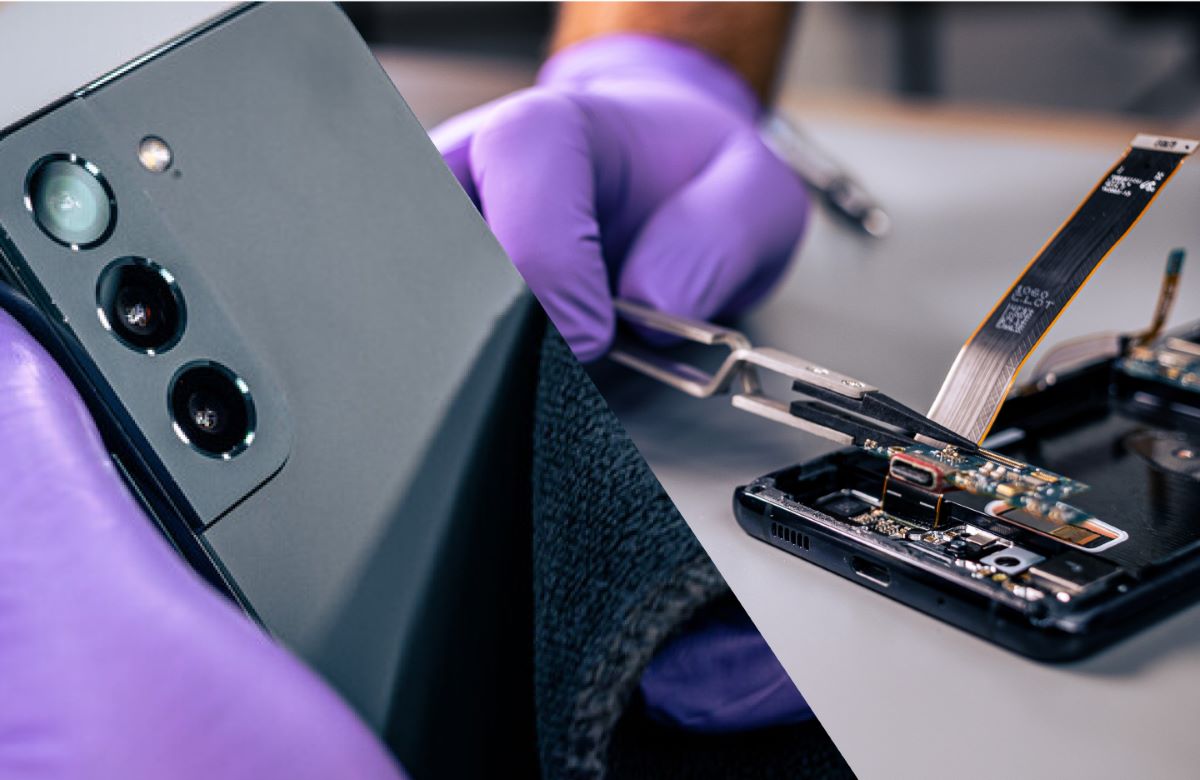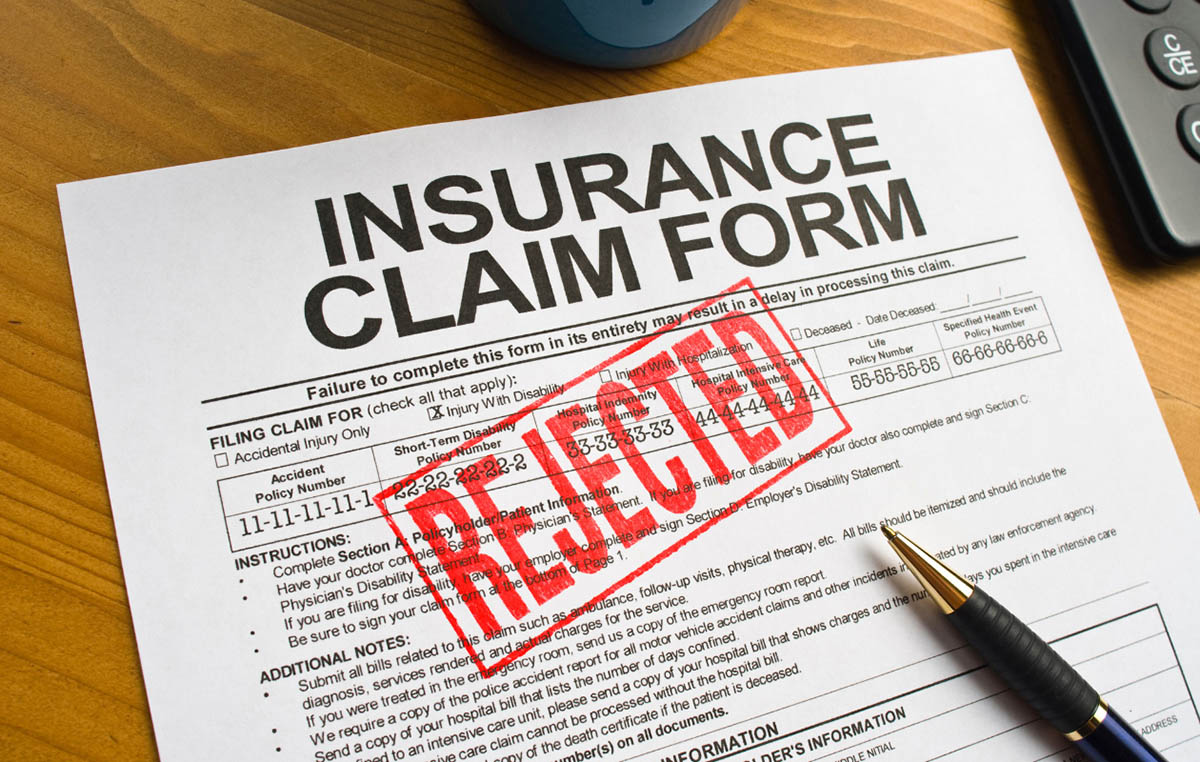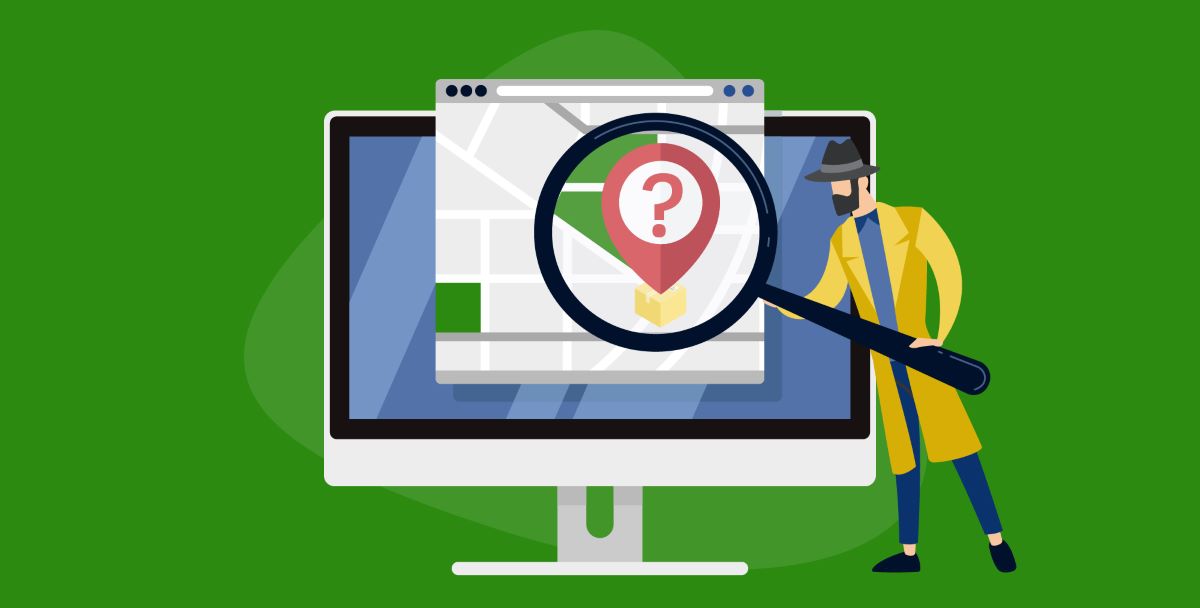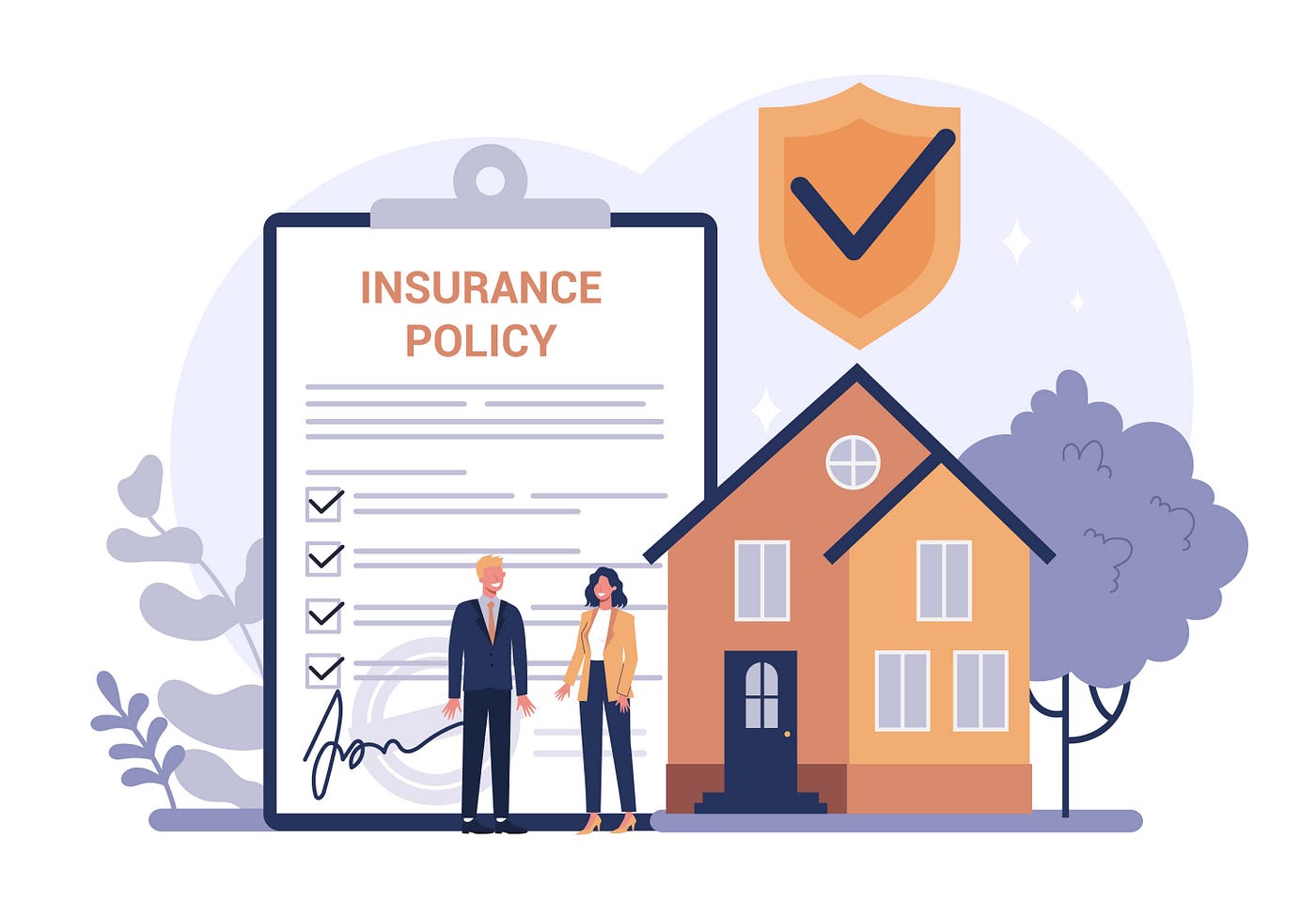Home>Finance>How To File An Insurance Claim Against Another Driver?


Finance
How To File An Insurance Claim Against Another Driver?
Modified: February 21, 2024
Learn how to file an insurance claim against another driver and protect your finances. Get step-by-step guidance on navigating the claims process and maximizing your reimbursement.
(Many of the links in this article redirect to a specific reviewed product. Your purchase of these products through affiliate links helps to generate commission for LiveWell, at no extra cost. Learn more)
Table of Contents
- Introduction
- Step 1: Gather necessary information
- Step 2: Contact the other driver’s insurance company
- Step 3: Provide details of the accident
- Step 4: Provide supporting evidence
- Step 5: Cooperate with the insurance adjuster
- Step 6: Receive a settlement offer
- Step 7: Negotiate if necessary
- Step 8: Accept or reject the settlement offer
- Step 9: Seek legal assistance if needed
- Conclusion
Introduction
Being involved in a car accident can be a stressful and overwhelming experience. Aside from dealing with any injuries or damage to your vehicle, you may also need to file an insurance claim against the other driver to seek compensation for your losses. Knowing the steps to take in this process can help ensure a smoother and more successful claim.
When filing an insurance claim against another driver, it’s important to remember that each insurance company has its own specific procedures and requirements. However, there are general steps that you can follow to navigate the process more effectively.
In this article, we will guide you through the step-by-step process of filing an insurance claim against another driver. From gathering necessary information to negotiating a settlement offer, we’ll provide you with helpful tips to ensure a successful claim.
It’s crucial to keep in mind that the information provided here is for informational purposes only and is not legal advice. If you have any specific questions or concerns about your situation, it’s best to consult with a qualified personal injury attorney or contact your insurance provider for guidance.
Step 1: Gather necessary information
Before filing an insurance claim against another driver, it’s important to gather all the necessary information related to the accident. This information will be crucial when communicating with the other driver’s insurance company and providing evidence to support your claim. Here are some key pieces of information you should collect:
- Date, time, and location of the accident: Make sure to note down the exact date, time, and location where the accident occurred. This information will help establish the timeline and circumstances of the incident.
- Contact details of the other driver: Obtain the full name, contact number, address, and insurance information of the other driver involved in the accident. This will be important for filing the claim and for future communication.
- Witness information: If there were any witnesses to the accident, try to gather their names, contact information, and statements about what they saw. Witness testimonies can be valuable in supporting your claim and providing additional evidence.
- Police report: If the police were called to the scene of the accident, make sure to obtain a copy of the police report. The report will document the details of the accident, including the parties involved, any traffic violations, and other relevant information.
- Photographs and videos: Take clear and comprehensive photographs or videos of the accident scene, the vehicle damage, and any visible injuries you may have sustained. Visual evidence can be highly persuasive in proving fault and the extent of the damages.
- Medical records and bills: If you sought medical attention following the accident, gather all medical records, including doctor’s notes, diagnostic reports, and medical bills. These documents will help substantiate your claim for any medical expenses and injuries.
By gathering all the necessary information, you will be well-prepared to initiate the insurance claim process with the other driver’s insurance company. It’s important to organize and keep all the documents and information in a safe place for easy access throughout the claims process.
Remember, every accident is unique, and the specific information required may vary depending on the circumstances. It’s always a good idea to contact your insurance company or seek legal advice for guidance on the information you need to gather for your particular situation.
Step 2: Contact the other driver’s insurance company
Once you have gathered all the necessary information, the next step is to contact the other driver’s insurance company to initiate the claims process. This is an important step in seeking compensation for your losses. Here’s how you can go about contacting the insurance company:
- Locate the contact information: Look for the contact details of the other driver’s insurance company. This can typically be found on the insurance card provided by the other driver at the time of the accident.
- Call the insurance company: Use the provided contact number to call the insurance company. Be prepared to provide your own insurance information, as well as the details of the accident.
- Provide accurate and thorough information: When speaking with the insurance representative, provide a clear and concise account of the accident. Explain the sequence of events and any relevant details, such as the date, time, and location of the accident.
- Request a claim number: Make sure to ask for a claim number during your initial conversation. This unique identifier will help track your claim throughout the process.
- Take note of the insurance representative’s information: Write down the name of the person you spoke with, their contact information, and any instructions or next steps they provide.
During your conversation with the insurance company, it’s important to remain calm and professional. Stick to the facts and avoid admitting fault or placing blame on the other driver. Keep in mind that the insurance representative’s primary goal is to protect the interests of their company, so it’s important to be mindful of what you say.
If, for any reason, you’re having difficulty reaching the other driver’s insurance company or getting a response, don’t hesitate to seek assistance from your own insurance company. They can guide you on how to proceed or even handle the claim on your behalf if necessary.
Remember, each insurance company may have different procedures and timelines for processing claims. Be prepared to provide any additional information or documentation they may request and keep a record of all communication with the insurance company for future reference.
By promptly contacting the other driver’s insurance company, you can start the claims process and move closer to receiving the compensation you deserve for your losses.
Step 3: Provide details of the accident
After contacting the other driver’s insurance company, the next step is to provide them with the necessary details of the accident. This step is crucial as it helps the insurance company understand the circumstances surrounding the incident and assess the extent of damages. Here’s how you can effectively provide details of the accident:
- Be thorough and accurate: When providing details of the accident, ensure that you provide a comprehensive and accurate account of what happened. Include information such as the date, time, and location of the accident, as well as a description of the events leading up to the collision.
- Stick to the facts: While it is important to be detailed, it’s equally important to avoid speculation or assumptions. Stick to the facts of what you observed and experienced during the accident.
- Describe the damages: Clearly explain the damages to your vehicle and any other property involved in the accident. Include information about any visible injuries you sustained, and if applicable, provide details of any other individuals involved in the accident and their injuries.
- Provide the police report: If you obtained a copy of the police report, provide it to the insurance company. The report contains an official account of the accident, which can be valuable in supporting your claim.
- Utilize photographs and videos: Share any photographs or videos you captured at the scene of the accident. Visual evidence can help strengthen your claim and provide a clear visual representation of the damages and injuries.
- Stick to the truth: It’s crucial to be honest and factual when providing details. Avoid exaggerating or downplaying any factors related to the accident. Insurance companies have processes in place to investigate claims, and any inconsistencies can potentially jeopardize your case.
When communicating with the insurance company, it’s important to remain respectful and cooperative. Answer any questions they may have truthfully and promptly. Keep in mind that insurance companies often have their own adjusters who may investigate the accident further or request additional information.
Remember to document all interactions with the insurance company, including the date, time, and content of your conversations. This written record can serve as evidence in case of any discrepancies or issues throughout the claims process.
By providing clear and accurate details of the accident to the insurance company, you can help them understand the circumstances surrounding the incident and support your claim for compensation.
Step 4: Provide supporting evidence
Supporting evidence is a crucial element in filing an insurance claim against another driver. It helps prove the extent of damage, injuries, and liability in the accident. By providing strong evidence, you can strengthen your claim and increase your chances of receiving fair compensation. Here are some key types of supporting evidence to consider:
- Photographs and videos: Provide clear and detailed photographs or videos of the accident scene, vehicle damages, skid marks, road conditions, and any visible injuries you sustained. These visuals can help establish the severity of the impact and provide a visual representation of the damages.
- Accident reconstruction report: If the accident was complex or liability is disputed, an accident reconstruction expert can evaluate the evidence and create a detailed report. This report can provide scientific analysis and simulations to determine factors such as speed, location, and impact angles, helping to clarify the sequence of events.
- Witness statements: If there were any witnesses to the accident, gather their statements and contact information. Witness testimonies can provide valuable perspective and support your version of events.
- Medical records: Collect all relevant medical records, including doctor’s notes, diagnostic tests, and treatment plans. These documents help establish the extent of your injuries and the associated medical expenses. They provide evidence of the physical and financial impact of the accident.
- Receipts and invoices: Keep track of all expenses related to the accident, such as towing fees, repair costs, car rental expenses, and medical bills. Having detailed documentation of these expenses strengthens your claim for compensation.
- Police reports: If law enforcement was called to the scene of the accident, provide a copy of the police report. This official document includes objective information about the accident, including any citations or charges filed.
- Expert opinions: If necessary, consult with medical or other relevant experts who can provide professional opinions supporting your claim. This may include specialists, accident reconstructionists, or medical professionals.
When submitting supporting evidence to the insurance company, ensure that all documents are accurately organized and legible. It is also helpful to provide a clear summary or cover letter highlighting the key evidence included with your claim.
Remember to keep copies of all submitted evidence for your own records. This will enable you to refer back to them during the claims process or in the event of any disputes or additional requests for information.
By providing strong supporting evidence, you are better prepared to prove the extent of damages, injuries, and liability in the accident. This can ultimately help support your claim for fair compensation from the other driver’s insurance company.
Step 5: Cooperate with the insurance adjuster
Once you have provided the necessary details and supporting evidence to the other driver’s insurance company, an insurance adjuster will be assigned to your case. The adjuster’s role is to investigate the claim, assess the damages, and determine a fair settlement offer. Cooperating with the insurance adjuster is essential to ensure a smooth and efficient claims process. Here’s how you can work effectively with the insurance adjuster:
- Establish clear lines of communication: Maintain open and regular communication with the insurance adjuster. Ensure you have their contact information, including their name, email address, and direct phone number.
- Respond promptly: Whenever the insurance adjuster reaches out to you with inquiries or requests for information, respond in a timely manner. Prompt responses demonstrate your cooperation and commitment to the claims process.
- Provide additional information if required: During their investigation, the insurance adjuster may request additional information, documents, or evidence. Be proactive in providing any requested materials in a timely manner.
- Answer questions honestly: Be honest and transparent when responding to the adjuster’s questions. It is important to always provide accurate information and avoid exaggerations or false claims, as this can harm your credibility.
- Maintain records of all communication: Keep a record of all correspondence with the insurance adjuster. Note down the date, time, and content of each interaction, including phone calls, emails, or in-person meetings.
- Ask questions: If you have any concerns or uncertainties about the claims process, don’t hesitate to ask the insurance adjuster for clarification. Understanding the process and your rights will help you make informed decisions.
- Stay organized: Keep copies of all documents exchanged with the insurance adjuster, including claim forms, settlement offers, and any written communication. This ensures that you have a clear record of the progress of your claim.
Throughout the process, it’s important to remember that the insurance adjuster works for the insurance company and their goal is to settle the claim for the lowest amount possible. While they may seem friendly and sympathetic, it is essential to stay vigilant and advocate for your own best interests.
If negotiations become challenging or you are unsure about any aspect of the claims process, it may be helpful to seek guidance from a personal injury attorney. They can provide you with advice and advocate on your behalf to ensure you receive a fair settlement.
By cooperating with the insurance adjuster, you can help facilitate a smoother claims process and increase your chances of reaching a fair settlement for your losses.
Step 6: Receive a settlement offer
After the insurance company’s adjuster has completed their investigation and assessed the damages, you will receive a settlement offer. This offer represents the amount of compensation the insurance company is willing to provide to resolve your claim. It is essential to carefully evaluate the settlement offer before accepting or rejecting it. Here’s what you should consider during this step:
- Review the offer in detail: Carefully read through the settlement offer, including any terms and conditions or release of liability. Make sure you understand what the offer entails and how it addresses your losses.
- Evaluate the adequacy of the offer: Assess whether the settlement offer adequately covers all your losses, including medical expenses, property damage, lost wages, and pain and suffering. Compare the offer to the documented damages and expenses you have incurred.
- Consider future costs and long-term effects: Take into account any potential future costs such as ongoing medical treatment, therapy, or lost earning capacity. If your injuries have long-term effects, ensure the settlement offer accounts for these factors.
- Consult with a personal injury attorney: If you’re unsure about whether the settlement offer is fair or if you believe you are entitled to a higher amount, it may be beneficial to consult with a personal injury attorney. They can provide you with a professional assessment and advise you on the best course of action.
- Negotiate, if needed: If you believe the settlement offer is too low, you have the option to negotiate with the insurance company. Provide them with supporting documentation and evidence to justify your counteroffer. This negotiation may involve several back-and-forth conversations to reach a mutually agreeable settlement.
- Weigh the potential risks of declining the offer: Keep in mind that rejecting a settlement offer carries certain risks. There is a possibility that you may not receive a better offer or that your case could be prolonged through litigation. Consider the potential costs and benefits of accepting or rejecting the offer.
It’s important to remember that you have the right to reject an inadequate settlement offer and pursue legal action if necessary. However, it’s also essential to carefully consider the potential time, energy, and costs involved in pursuing further litigation.
If you decide to accept the settlement offer, ensure that you obtain the agreement in writing and fully understand the terms and conditions. Once you accept the offer, you typically waive your right to pursue further legal action related to the accident.
By carefully evaluating the settlement offer and considering all relevant factors, you can make an informed decision that best meets your needs and interests.
Step 7: Negotiate if necessary
If you receive a settlement offer that you believe is insufficient to fully compensate for your losses, you have the option to negotiate with the insurance company. Negotiation is a common step in the claims process and can help increase the amount of compensation you receive. Here are some tips for effectively negotiating your claim:
- Prepare your case: Before entering into negotiations, gather all relevant evidence and documentation to support your claim. This may include medical records, repair estimates, and any other evidence of damages or losses.
- Research and understand your rights: Familiarize yourself with your state’s laws regarding personal injury claims, as well as the insurance company’s policies and procedures. This knowledge will help you navigate the negotiation process more effectively.
- Present a counteroffer: Based on your evaluation of the initial settlement offer and your supporting evidence, present a counteroffer that reflects a fair and reasonable amount of compensation for your losses. Justify your counteroffer with factual evidence and explanations.
- Remain calm and persistent: Negotiations may require patience and persistence. Stay focused on your goal and remain calm and professional throughout the process. Avoid getting emotional or argumentative, as this can hinder productive negotiations.
- Be open to compromise: In negotiations, both parties may need to make concessions to arrive at a mutually acceptable settlement. Be open to reasonable compromises while ensuring that your rights and interests are protected.
- Consider hiring a personal injury attorney: If negotiations become complex or challenging, it may be beneficial to seek assistance from a personal injury attorney. They can provide guidance, negotiate on your behalf, and help ensure you receive fair compensation.
- Document all communication: Keep a record of all communication with the insurance company during negotiations. This includes emails, letters, and phone conversations. This documentation serves as evidence of the negotiation process.
- Know your bottom line: Determine a realistic minimum settlement amount that you are willing to accept. This will help you evaluate whether the negotiation is progressing in a favorable direction or if further action, such as litigation, may be necessary.
Remember, negotiation is a give-and-take process. It may require several rounds of back-and-forth communication before reaching a settlement agreement. If negotiations reach a standstill or if you are dissatisfied with the outcome, consult with a personal injury attorney to explore alternative options, such as mediation or filing a lawsuit.
By skillfully negotiating your claim, you can increase the likelihood of obtaining a fair settlement that adequately compensates you for your losses and expenses.
Step 8: Accept or reject the settlement offer
Once you have gone through the negotiation process with the insurance company, you will reach a point where you need to decide whether to accept or reject the settlement offer. This decision should be based on a careful evaluation of the offer and consideration of your individual circumstances. Here are some factors to consider when making this important decision:
- Evaluation of the offer: Assess whether the settlement offer fairly compensates you for all your losses, including medical expenses, property damage, lost wages, and pain and suffering. Compare the offer to the documented damages and expenses you have incurred throughout the process.
- Consult with a personal injury attorney: If you are unsure about the fairness of the offer or need guidance in assessing its adequacy, consult with a personal injury attorney. They can provide you with a professional analysis and advise you on the best course of action.
- Weigh the potential risks: Consider the potential risks and benefits of accepting or rejecting the offer. This includes the potential costs of pursuing litigation, the likelihood of success, and the potential time and energy required for a trial.
- Future costs and long-term effects: Take into account any potential future costs, such as ongoing medical treatment or therapy. Consider the long-term effects of your injuries and whether the settlement offer adequately addresses these factors.
- Your personal circumstances: Assess your individual circumstances and financial needs. Consider if accepting the settlement offer will provide you with the necessary compensation to move forward and cover your expenses.
- Your tolerance for uncertainty: Evaluate your comfort level with the potential uncertainties and delays associated with litigation. Litigation can be a lengthy and unpredictable process, and accepting a settlement offer provides a more certain resolution.
Ultimately, the decision to accept or reject a settlement offer is yours to make. Take the time to carefully weigh all the factors involved and consider seeking advice from a professional if needed. Remember, once you accept a settlement offer, you generally waive your right to pursue further legal action related to the accident.
If you choose to reject the settlement offer, be prepared to continue negotiations or explore other avenues, such as mediation or filing a lawsuit. Discuss your options with a personal injury attorney to determine the best next steps for your situation.
By carefully evaluating the settlement offer and considering your unique circumstances, you can make an informed decision that aligns with your best interests and ensures fair compensation for your losses.
Step 9: Seek legal assistance if needed
If you have encountered challenges during the insurance claims process, are dissatisfied with the settlement offer, or have concerns about your rights and entitlement to compensation, it may be beneficial to seek legal assistance. An experienced personal injury attorney can provide valuable guidance and advocacy to help protect your interests. Here’s how seeking legal assistance can be beneficial:
- Expert guidance: Personal injury attorneys specialize in handling insurance claims and have in-depth knowledge of the legal system. They can provide expert advice on the strength of your case, your rights, and the potential legal options available to you.
- Negotiation and advocacy: Attorneys are skilled negotiators who can effectively communicate with the insurance company on your behalf. They can push for a fair settlement and advocate for your best interests throughout the claims process.
- Legal representation in court: If negotiations fail to yield a satisfactory settlement, an attorney can represent you in court. They will prepare your case, gather evidence, present legal arguments, and fight for fair compensation on your behalf.
- Access to resources: Attorneys have access to a network of professionals, such as accident reconstruction experts or medical consultants, who can provide additional support in building your case.
- Peace of mind: By entrusting your case to a personal injury attorney, you can alleviate the stress of navigating the complex legal process. They will handle the legal aspects, allowing you to focus on your recovery and well-being.
- Contingency fee arrangement: Many personal injury attorneys work on a contingency fee basis, which means they only get paid if they successfully recover compensation for you. This arrangement can make legal representation more accessible and relieve financial burdens.
When seeking legal assistance, it’s important to choose an attorney with experience in personal injury and insurance claims. Research and schedule consultations with attorneys to find someone who has a track record of success in handling cases similar to yours.
During the initial consultation, discuss your concerns, provide all relevant information, and ask questions to understand the attorney’s approach and how they can assist you. This will help you make an informed decision about whether to proceed with legal representation.
Remember, the decision to seek legal assistance is a personal one, and it should be based on the specifics of your case and your comfort level with the process. If you decide to proceed, work closely with your attorney, provide them with all necessary information, and cooperate fully to maximize the chances of a successful outcome.
By seeking legal assistance when needed, you can ensure that your rights are protected, and you receive the proper guidance and representation throughout the insurance claims process.
Conclusion
Filing an insurance claim against another driver requires careful navigation of the claims process. By following the step-by-step guide outlined in this article, you can effectively pursue compensation for your losses. From gathering necessary information and contacting the other driver’s insurance company to providing details of the accident and negotiating the settlement offer, each step plays a crucial role in the successful resolution of your claim.
Remember, every accident is unique, and the specific details and requirements may vary. It’s important to consult with your insurance company or a personal injury attorney to understand the specific procedures and regulations that apply to your situation.
Throughout the process, remain organized, responsive, and cooperative. Collect and document all relevant information, including photographs, witness statements, and medical records. Communicate clearly and honestly with the insurance adjuster, and consider seeking legal assistance if you encounter challenges or need guidance.
When evaluating a settlement offer, carefully assess its adequacy and consult with a professional if needed. Ultimately, accepting or rejecting the offer should be based on an evaluation of your losses, your individual circumstances, and your long-term financial needs.
While the claims process may be complex and sometimes frustrating, it is essential to advocate for your rights and seek fair compensation for your damages. Whether you choose to accept a settlement or pursue legal action, understanding the steps involved and having the necessary support can help you achieve a resolution.
Remember that this article provides general guidance and is not a substitute for legal advice. If you have specific questions or concerns about your situation, it is always best to consult with a qualified personal injury attorney or contact your insurance provider for personalized guidance.
By navigating the insurance claims process with knowledge and assistance, you can work towards obtaining the compensation you deserve and move forward towards recovery and financial stability.














